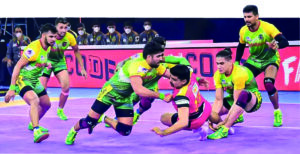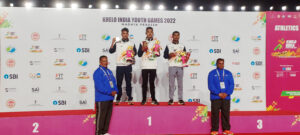Strap: Strong thigh muscles are better placed to handle the stress that can cause patellar tendinitis.
Knee pain is one of the most common symptoms of the human body. The knee pain can be alone or come along with swelling of the knee joint. The various causes of knee pain can be traumatic, infective, inflammatory etc.
The site of knee pain is essentially very important as the knee joint has a complex of structures such as the bursa, ligaments, cartilage, tendon, bone, etc. so the cause of the pain can be in any one of them. It can be also diffuse or localised to any one part of the knee such as the anterior, posterior, upper & lower parts of the knees. One of the most common causes of knee pain in athletes is known as Jumpers’ knee.
As the name suggests it’s mostly seen among players involved in the jump sports such as badminton, basketball, volleyball, etc. but it’s also seen among non-jumpers. The pain is around the front of the knee, mostly on the patella tendon at the inferior pole of the patella. The jumper knee is also known as Patellar tendinitis.
Overview
Patellar tendinitis is an injury to the tendon connecting your kneecap (patella) to your shinbone. The patellar tendon works with the muscles at the front of your thigh to extend your knee so that you can kick, run and jump.

Symptoms
Pain is the first symptom of patellar tendinitis, usually between your kneecap and where the tendon attaches to your shinbone (tibia).
Initially, you may only feel pain in your knee as you begin a physical activity or just after an intense workout.
Over time, the pain worsens and starts to interfere with playing your sport. Eventually, the pain interferes with daily movements such as climbing stairs or rising from a chair. It’s mostly present outside the knee joint unlike inside the joint when there is a cartilage issue.
Sign: Tenderness at the inferior pole of patella. Pain increases on the forced extension of the knee joint. Absence of retro patellar tenderness.
Cause: Patellar tendinitis is a common overuse injury, caused by repeated stress on your patellar tendon. The stress results in tiny tears in the tendon, which your body attempts to repair.
But as the tears in the tendon multiply, they cause pain from inflammation and weakening of the tendon. When this tendon damage persists for more than a few weeks, it’s called tendinopathy.
Risk factors
A combination of factors may contribute to the development of patellar tendinitis, including:
Physical activity: Running and jumping are most commonly associated with patellar tendinitis. Sudden increases in how hard or how often you engage in the activity also add stress to the tendon, as can changing your running shoes.
Tight leg muscles: Tight thigh muscles (quadriceps) and hamstrings, which run up the back of your thighs, can increase strain on your patellar tendon.
Muscular imbalance: If some muscles in your legs are much stronger than others, the stronger muscles could pull harder on your patellar tendon. This uneven pull could cause tendinitis.
Chronic illness: Some illnesses disrupt blood flow to the knee, which weakens the tendon. Examples include kidney failure, autoimmune diseases such as lupus or rheumatoid arthritis and metabolic diseases such as diabetes.
Prevention
To reduce your risk of developing patellar tendinitis, take these steps:
Don’t play through pain: As soon as you notice exercise-related knee pain, ice the area and rest. Until your knee is pain-free, avoid activities that put stress on your patellar tendon.
Strengthen your muscles: Strong thigh muscles are better able to handle the stresses that can cause patellar tendinitis. Eccentric exercises, which involve lowering your leg very slowly after extending your knee, are particularly helpful.
Improve your technique: To be sure you’re using your body correctly, consider taking lessons or getting professional instructions when starting a new sport or using exercise equipment.
Treatment
Analgesics and anti-inflammatory do help. There is no reply of Platelet-rich plasma or steroids. Both should be avoided as they can cause severe pain and also rupture the tendon. For athletes, these are banned substances and should be avoided.




